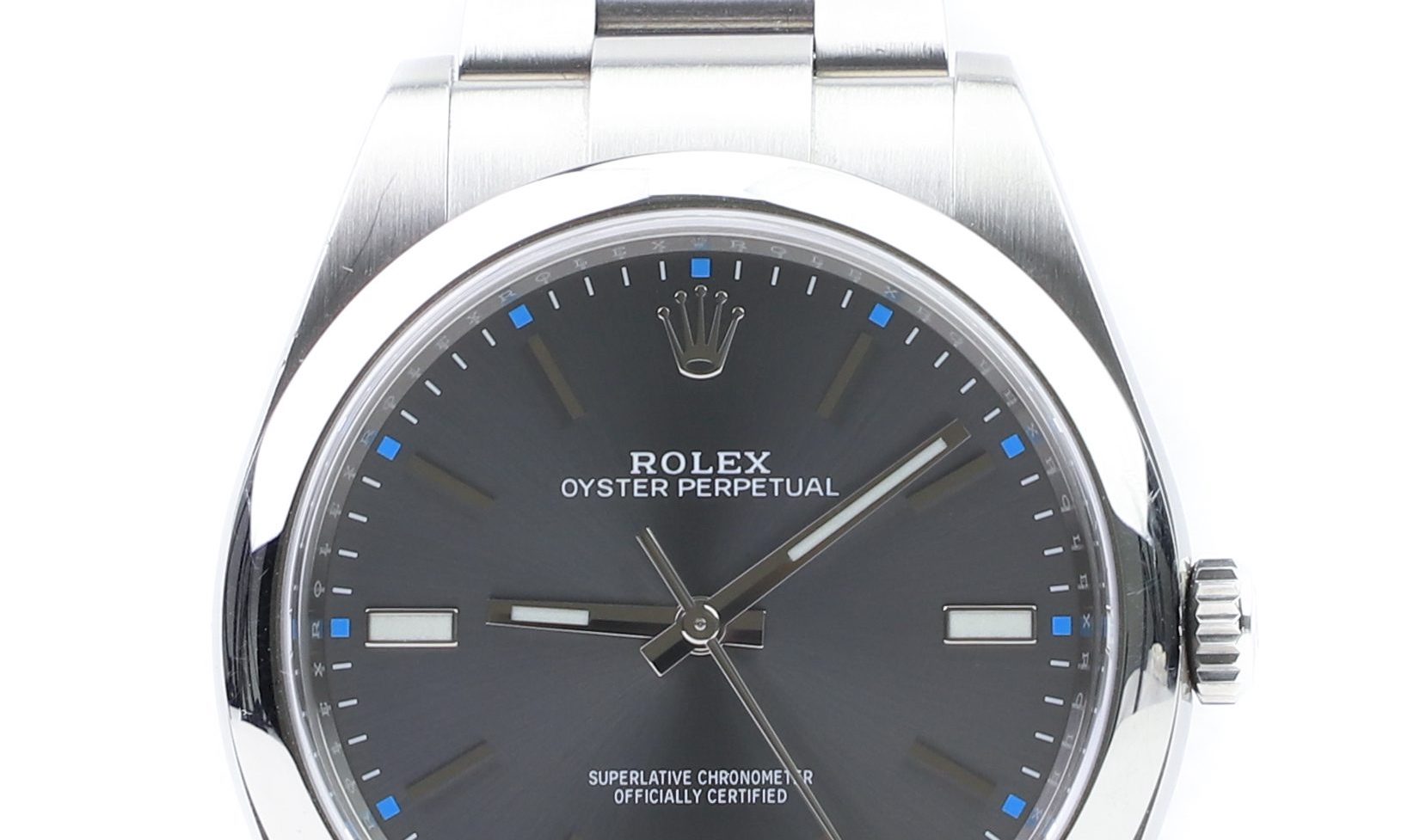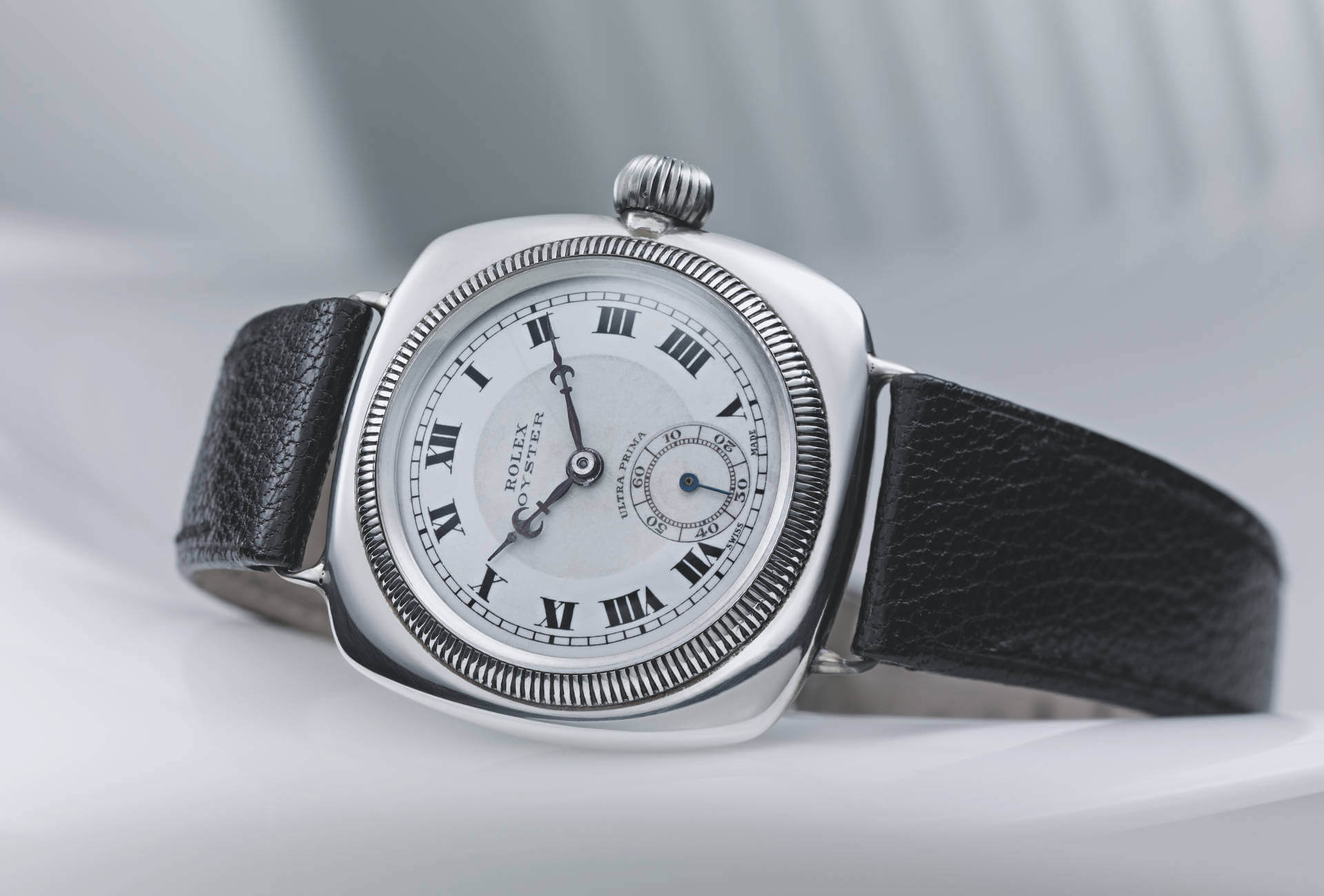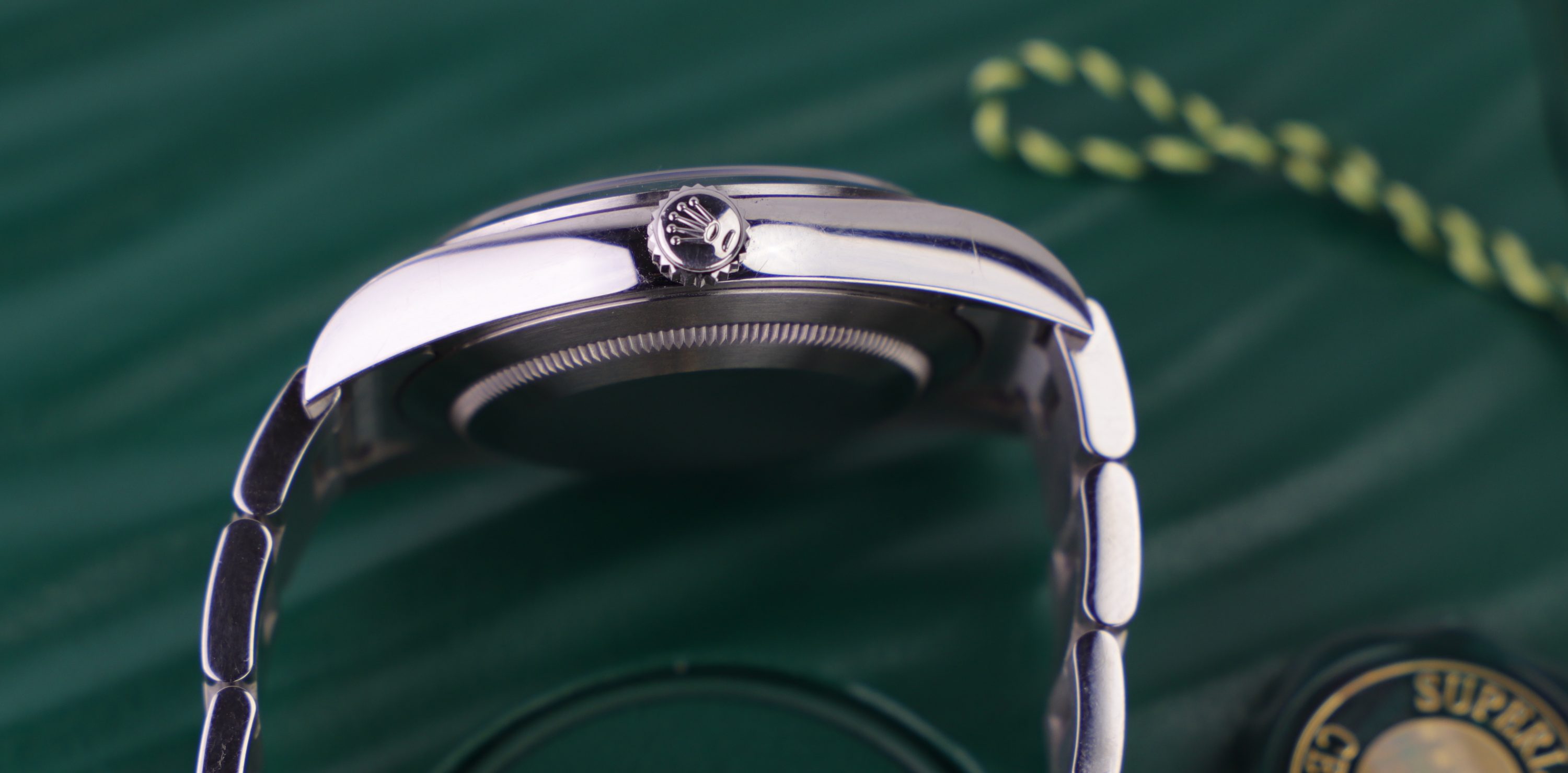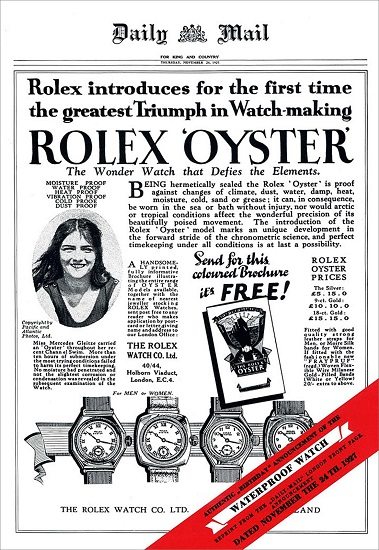
What does Rolex Oyster Perpetual Mean? [Complete Guide]
Rolex Oyster is a term that is closely associated with the Rolex brand.
Recognized as one of the most luxurious and prestigious watch brands in the world, no matter if you ask someone who knows watches well, or someone who doesn’t know much about them, most people know about Rolex.
Rolex is a brand that satisfies with nothing but perfection, and continues to develop and innovate its products in order to become more reliable, higher quality, and more accurate.
One innovation that Rolex has come up with is the ”Oyster”.
You can find the small words ”Oyster Perpetual” on the dial
Two small words, but words that actually have great importance for Rolex watches.
In this article, we explain the term Rolex Oyster Perpetual, what it means, and how it came about.
What is Rolex Oyster Perpetual?
On the dials of almost all Rolex watches, you’ll find these words. The term refers to the ”Oyster case” that Rolex uses for most of its watches. The Oyster case is a symbol of waterproofness and symbolizes an important milestone in Rolex’s and watchmaking’s history. As you know, even just a tiny bit of water is dangerous for a watch movement, and can completely destroy a watch. Thanks to the new Oyster case innovation, Rolex now offers watches that keep the movement safe from any dust or water.
The legend about the name…
There is a legend about how the Rolex Oyster name came about. The legend has it that the name came about when Hans Wilsdorf, one night at a dinner party, struggled to open up an oyster.
The tight closure of the Oyster’s shell can, of course, be symbolic of the watertight seals that are used in the Rolex Oysters, and can also refer to the aquatic habitat that Oysters have, symbolic of Rolex Oyster’s ability to withstand water.
The Rolex Oyster case
The Oyster case was invented by Rolex in 1926 and came to become the world’s first waterproof case for a wristwatch thanks to the patented concept of screwing down the bezel as well as the case back and the winding crown against the middle case. The first Rolex to feature this case structure was of course named “Oyster”.

In Rolex’s own words, the Oyster case is a symbol of robustness and waterproofness. The Oyster case is used for all Rolex watches that are water-resistant up to 100 meters. This means that the Cellini range of watches does not use the Oyster case – which of course may not be a surprise considering that is a very slimmed dress watch.
Unlike what many people believe, Rolex ”Oyster” is not a model itself, but rather, as mentioned, a case structure that is meant to keep the movement safe from water.
For example, you can find ”Oyster Perpetual” on the dial of a Rolex Datejust, but the model is ”Datejust”.

The Rolex Oyster case guarantees water resistance to a depth of at least 100 meters (330 feet), and up to 3,900 meters (12,800 feet) for the Rolex Deepsea extreme divers’ watch.
The Oysters have a solid middle case which is stamped and machined out of a solid block of either Oystersteel, 18 ct gold, or platinum (depending on the watch model).
This solid middle case works as the backbone for all of the other parts and ensures that these are securely fitted. Just because a Rolex has an Oyster case, however, doesn’t mean that all of these cases are identical in design. Some cases, for example, feature crown guards, whilst some cases are much thinner.
But what they have in common is the way the cases are assembled to allow for water resistance.
To ensure water resistance, the case back of the Oyster watches is screwed down to the case and demands a special tool exclusive to authorized Rolex watchmakers, so only they can access the movement. The first Oysters also had screw down on the front of the case to ensure water resistance. This can be seen in the flutings of the bezel on the Oyster watch above. Today, the front is not screwed to the case anymore, however, Rolex still makes fluted bezels for their Datejust model, all crafted in solid 18K gold, which can be seen as a nod to the past, apart from looking really good.
The History Of The Rolex Oyster Case
The Rolex Oyster case actually has an interesting history.
Hans Wilsdorf, the founder of Rolex, did not actually invent the Oyster concept in its full. Instead, it is based on a patent initially filed by Paul Perregaux and Georges Peret in 1925. Wilsdorf purchased all rights to the patent from them When he saw their design, and then used elements of their screw-down crown design in his own Oyster case. The following year, he came to register his own Oyster Case innovation. In other words, while Rolex is usually credited for making the world’s first water-resistant case for a wristwatch, the whole truth is actually that the original idea and design for a water-resistant case belongs to Perregaux and Peret.
The crown of the Oyster design
The crown plays a crucial part in the Oyster design since this is a dangerous point that can risk leaking water if not secured properly, as it is a direct channel straight to the movement of the watch.
Rolex uses either Triplock or Twinlock for its Oyster case watches, which means either a two-point seal or a three-point seal for water protection.

The crown itself is a technical masterpiece that shouldn’t be underrated. The winding crown of Rolex watches is made up of about 10 parts and is screwed hermetically onto the watch case.
The Rolex Oyster Case: tried and true
After Hans Wilsdorf invented the Rolex Oyster, he wanted to prove the watch’s great ability to withstand water to the public.
As such, in 1927, the English swimmer Mercedes Gleitze wore an Oyster watch around her neck while swimming across the English Channel. Gleitze swam for over 10 hours, and during the whole swim, the Oyster watch remained in full function and water-sealed condition

This way of testing Rolex watches out in the field to prove their robustness in reliability came to become the start of a central part of Rolex’s marketing strategy, as they after this event were used on Mount Everest, by James Cameron, and many more, during demanding adventures.
Rolex Oyster terms
Rolex does not only use the term ”Oyster” for its case.
Rolex also uses the term for many other things related to its watches to prove their robustness and powerful characteristics.
Some examples are:
- Oyster bracelet
- Oystersteel
- Oysterdate
- Oysterflex
- Oysterquartz
- Oysterlock
The Oyster bracelet is the sporty and robust three-link bracelet that you primarily see on the Professional models such as the Submariner, Sea-Dweller, and a few other models of course.
Rolex Oyster Perpetual – what does it mean?
Apart from the term Rolex Oyster, you’ve probably also heard the term Oyster Perpetual.
As you know, the Rolex Oyster came in 1926. The Perpetual part was actually added in 1933 when Rolex rolled out the first reliable self-winding watch, named the Oyster Perpetual.
The word perpetual, as you know, means that it is never-ending, and goes on and on. This refers to the automatic movement that -if you wear it, will continue to tick year after year.
Now, what can be a bit confusing is that, unlike the term ”Oyster”, Rolex actually makes a model called ”Oyster Perpetual”.
This can particularly be confusing since many of the Rolex watches today feature the text ”Oyster Perpetual” on the dial, even though the model of that watch is not an Oyster perpetual.

The model Oyster Perpetual is a standard classic three-hand watch that has no other functions, and which is available with an array of different dial colors as well as in a number of different sizes.
There you have it! Now you know what the term Rolex Oyster means, as well as what the term Rolex Oyster Perpetual means!
Thanks for reading!





Rolex Oyster Perpetual watches are some of the most iconic and expensive watches on the market. What does “perpetual” mean in this context?
Technically, this would refer to almost all of Rolex’s watch. Today, all modern Rolex watches are classified as Oyster Perpetual watches.
Kind regards,
Millenary Watches